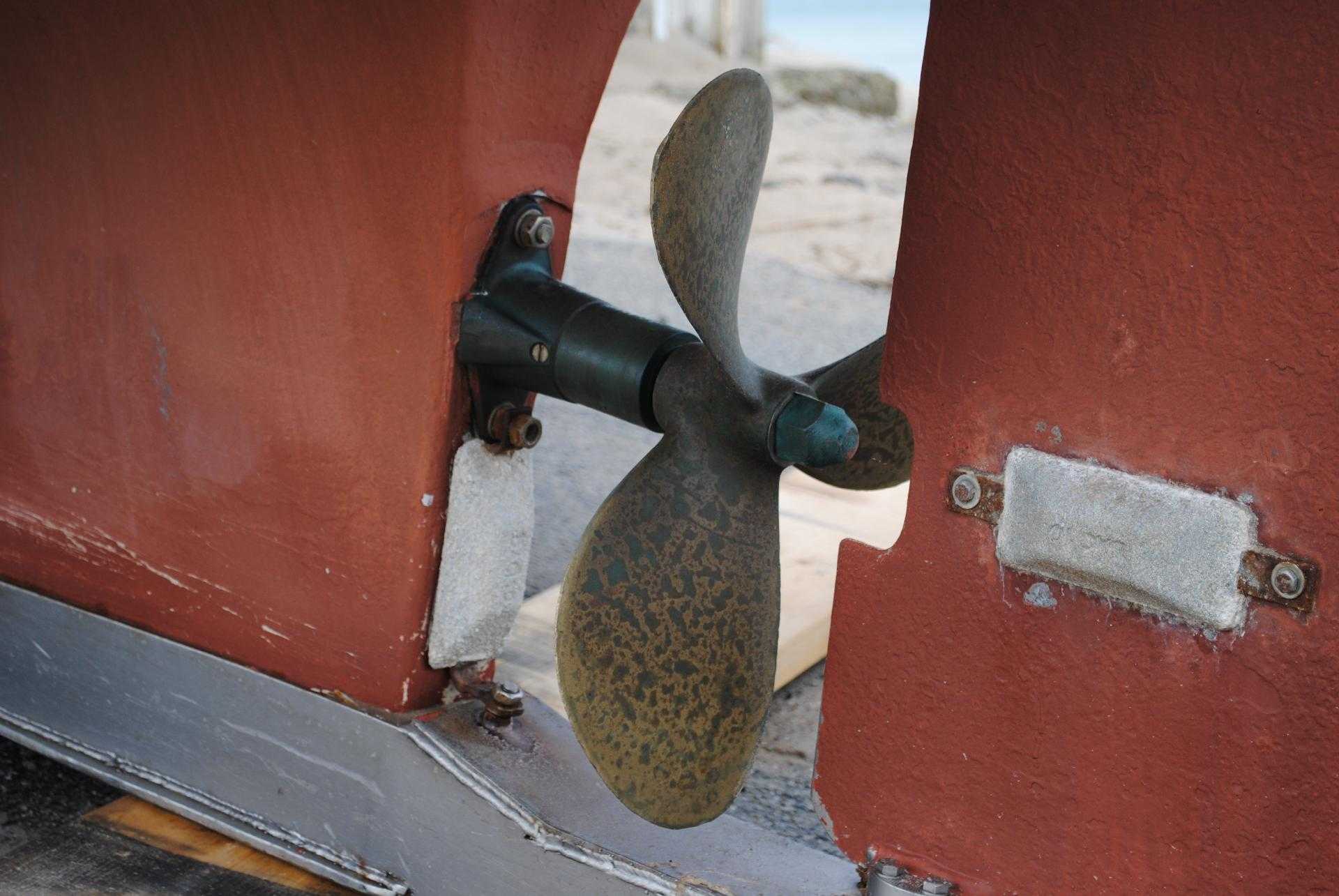If you’re a canal boat lover (like myself) and enjoy navigating yourself around historic English waterways, you may have heard of anodes. These spectacular little pieces of metal can commonly get forgotten about within the boating industry. However, they play a massive role in keeping our boats running well and safe. But what exactly are anodes on a canal boat?
An anode on a canal boat is practically a plaque of sacrificial metal that can either be bolted or welded to the vessel’s underwater hull. This protects the hull from becoming damaged by electrolysis, because the anode gravitates the chemical reaction to itself rather than any metal found underneath the boat.
As you can see, an anode is a vital component of a canal boat as it protects the underwater hull. When you get two different types of metals immersed in water, they become a battery. When these metal ions generate electrolysis, they then start corroding. To avoid this, you place anodes on crucial parts of the boat, as these will “take the hit” of the corrosion rather than the underneath hull or other essential mechanics.
Anodes can seem a bit questionable at first, and we want to make this easier for you. In this article, we’re going to discuss some common questions that are involved around anodes and river boating.
What Do Anodes Do on A Narrowboat?
If you have a narrowboat, on the exterior of the vessel will be various metals. These metals can be structural components or mechanical parts such as your hull, propellor shaft, etc.
Because these will typically be created from two different metals, the water will act as an electrolyte. As the water is the electrolyte, this causes the two separate metals to develop an electron current. Now, this is when corrosion will occur. To become a current, it’ll require metal ions meaning your metal will corrode.
However, this is where anodes save the day. To eliminate this issue, you place an anode on your vessel. Once added, the anode will take the force off the electron current. This will cause the added anode to corrode rather than the crucial elements of your narrowboat that are immersed under water.
To conclude this, an anode is used to stop electron currents forming between two metals, reducing the chances of your hull or essential components corroding. Note that some insurances will expect you to have anodes installed, checked, and changed regularly to make you eligible for their policy.
How many Anodes Do You Need for a Narrowboat?
It’s commonly known that most canal boats in the United Kingdom don’t have sufficient anodes fitted for adequate protection. Typically, many people just attach anodes to the bow and stern of the vessel. Although this can seem like enough, narrowboats that are 70m2 or larger should have a bare minimum of 6 anodes fitted.
Having too few anodes will massively affect the overall protection you’ll receive from them. As you can probably gather, too little protection from electrolysis will result in more current being formed from vital components, resulting in them corroding.
If you really want to get technical about it, an anode can only protect up to seven times its length. Meaning that only having two anodes installed on a 70m2 narrowboat isn’t ideal at all.
What type of anodes are available?
In the boating world, there are different anodes—each offer completely different benefits depending on the purpose of your vessel. There are two main types of water, saltwater, and freshwater, as you’re probably aware. Because these share different values and properties, various materials are used to create an anode to make them more suited for their purpose. Here’s what you should be using, depending on where you’re operating your boat:
Saltwater – If your vessel is mainly targeted towards saltwater, you’ll want to choose an anode that is made from Aluminium. This is because they’re more active in these types of conditions, which allows for additional protection.
Freshwater – A clear choice of anode for freshwater boating is magnesium. The reason people use this material for anodes in this environment is that they’re known for their low conductivity. This causes the anode to last longer, preventing it from being changed as regularly as a zinc one.
Selecting the right anode for your boat is the difference between having masses of issues with electronic corrosion or not. If this mistakenly happens, the results can be devastating, expensive, and undoubtedly heart-breaking over time.
Do I Need Anodes on a GRP Canal Cruiser?
Most GRP canal cruisers are made from fiberglass underneath hulls. However, crucial mechanics that are immersed underwater, such as your propellor and propellor shaft, are still metal. If these happen to be two different types of metal, you’ll still receive the same chemical reaction.
However, it’s unclear that all GRP canal cruisers will need anodes. This is because all GRP canal cruisers are made differently from the manufacturer, model, or they could have been renovated from their original state.
But, as a rule of thumb, this chemical reaction will only occur when there are two different types of metal immersed underwater. Therefore, if your GRP canal cruiser has only one kind of metal in the water, you won’t need anodes. However, if you believe there are two types of metal components under your fiberglass hull, it’s best to get anodes installed.
How Long Do Sacrificial Anodes Last on a Boat?
Unfortunately, there isn’t a solid answer to this one, and it’s similar to the old saying, “how long is a piece of string”. As a guideline, use 2-3 years, but it depends on the overall condition of the anodes, rather than a specific timeframe of when you should change them.
Anodes should be changed when they’ve corroded away by at least 50%. Allowing them to surpass this recommended amount will cause it to become less effective, making corrosion more likely to happen on your hull and various other underwater mechanics.
Conclusion
As you’re able to gather from the above, anodes play a vital role in protecting all boats. This isn’t just for canal vessels but also seawater boats. These little plaques of sacrificial metal honestly save our boats from extreme corrosion from the chemical reaction electrolysis.
After reading this, If you own a boat, why not check to see if your pride and joy has enough anodes to successfully protect your boat’s underwater hull? Don’t be alarmed if not, as corrosion only eats its way through 0.2 microns per year (on average), just be sure to add them to avoid any complications in the future.



![What Happened to Cruising The Cut [Narrowboat Youtuber]](https://canalboatuk.com/wp-content/uploads/2022/08/cruising-the-cut-youtube-channel-211x150.png)

Selecting the write anode for your boat
spelling suggestion “right” not “write”
Thanks Michael
The neighbouring boat in our marina has no anodes or galvanic isolator. How will this effect our boat?